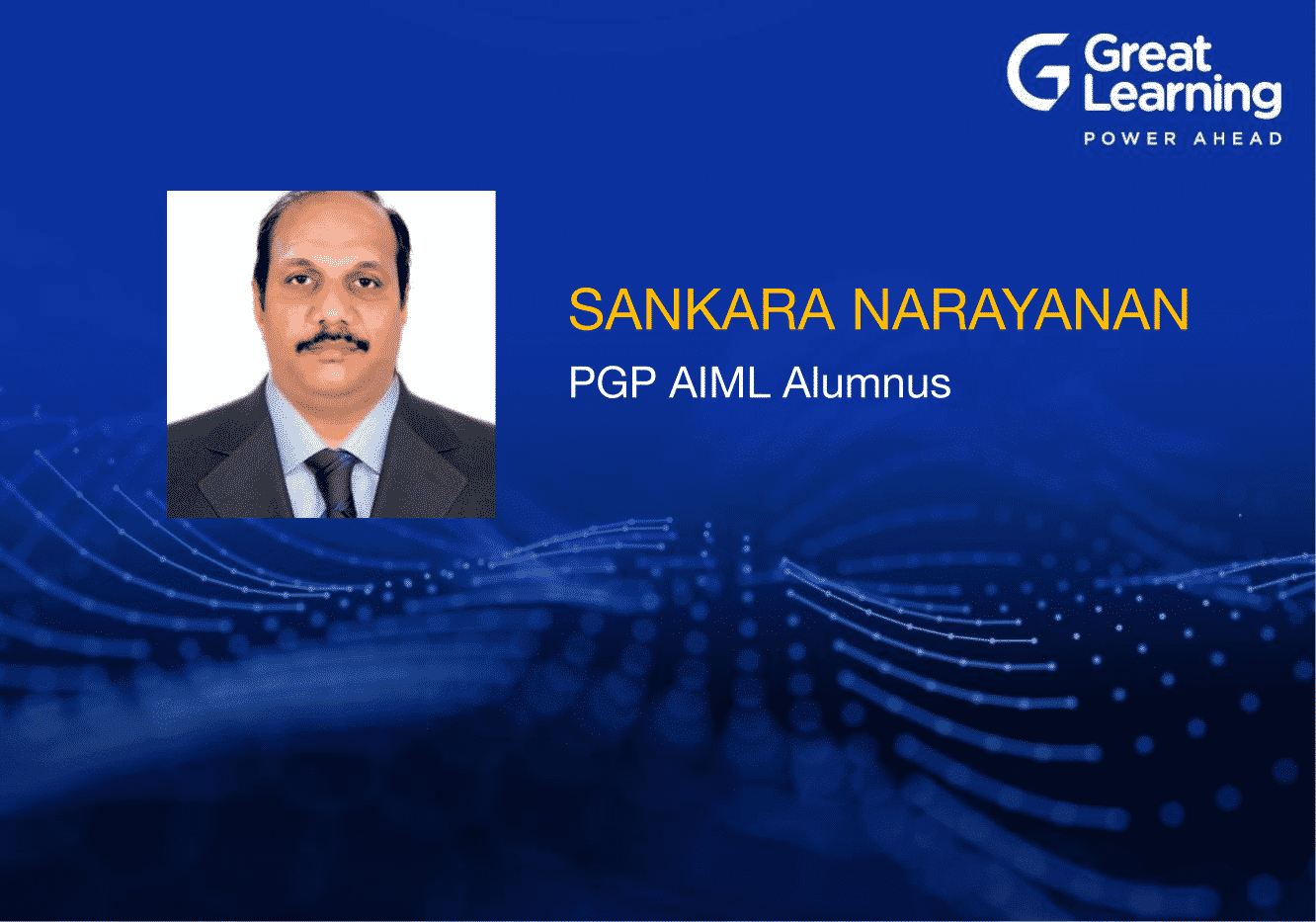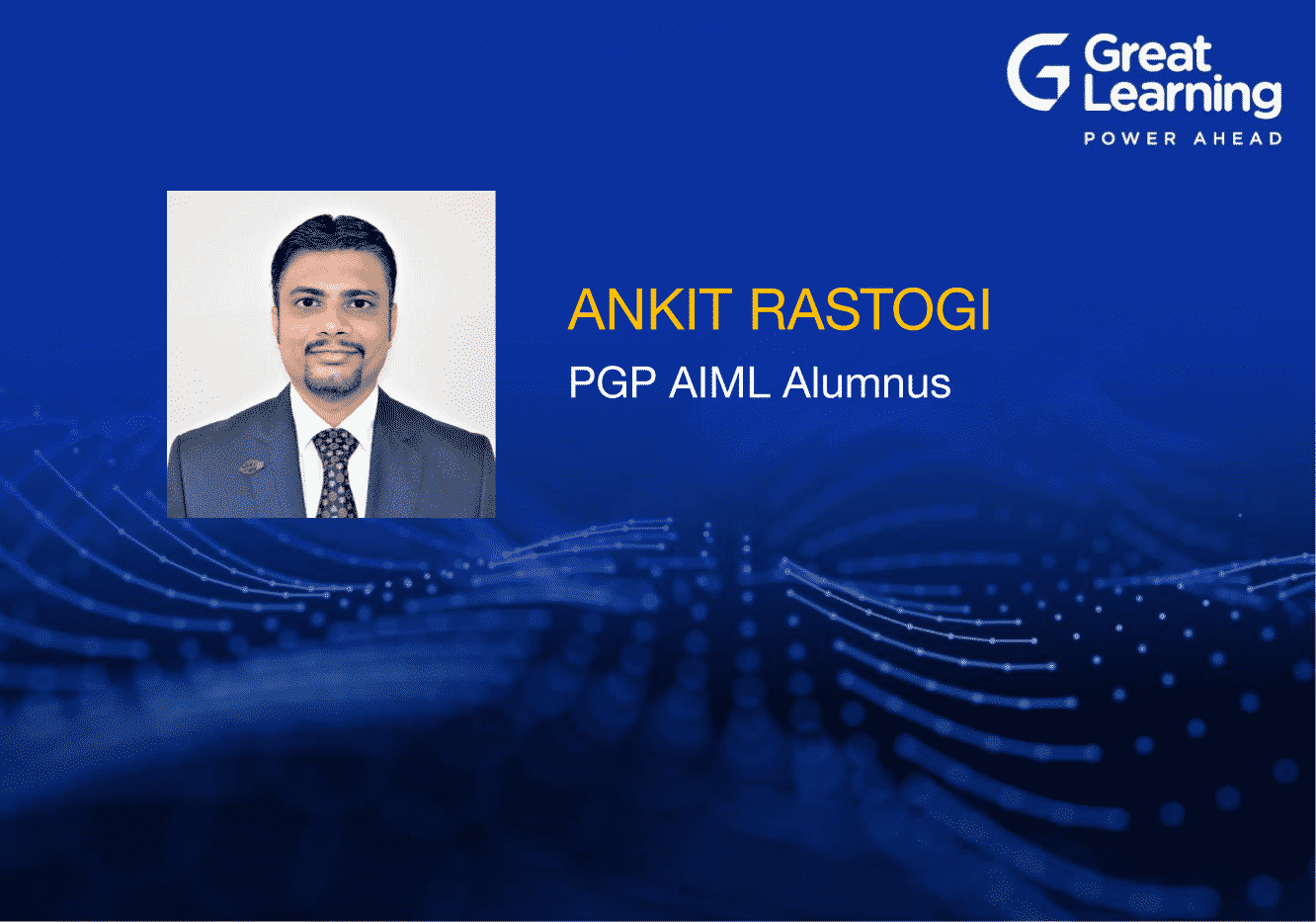Upskilling with Artificial Intelligence can prove to be extremely beneficial and help you power ahead your career. In today’s ever-changing world, technology is advancing rapidly. Read further to learn about Sudharani’s journey with Great Learning’s PGP Artificial Intelligence for Leaders in her own words.
I am Sudharani Venna. I have got 17+ years of overall professional experience. I am right now working in Thomson Reuters as Delivery Manager, and I lead Automation and Analytics projects. I have started as a Mainframe Developer and played different roles like .net developer, Pega developer, Python developer, and Mobile Software developer. I am now into ML/AI.
I was working on robotic automation projects dealing which gave a lot of scope for the predictive analytics projects on which I needed the expertise to identify the use case and pick the right use cases which give the right ROI and this program absolutely is helping in that, and I am trying to use all my learning to come up with the right revenue generate projects to the organization.
Recently I worked in an Expense Predictive ML model, and I work in the Finance domain where my team members spend a good amount of quality time forecasting the expenses for the next two quarters on the profit center level. They do not use any logic but purely forecast on the past experience and the knowledge they may have about the expenses in that part of the year.
This complete process was automated where ML models are now used to predict the forecast for both People and Non People expenses, and manual forecasts no longer generate, releasing 15+ FTEs to involve them in more productive work.
- Currently, TR Expense and Investments (E&I) process follows a manual spreadsheet-driven bottoms-up approach for planning and forecasting. This requires significant manual effort (quantify XX FTE per month) and precious resources during a close cycle. In the recent past, a POC has been done by the E&I team to create a predictive forecast with historical data using Python, which showed reasonable accuracy. Need to create a scalable holistic enterprise-wide solution.
- Current Reporting and insights for Expense Management are also done individually in desktop spreadsheets requiring XX FTE per month. These reports are generated by taking data from sources manually, and the same data may be pulled over by many individuals separately.
It was not impacting the Business as manually people were already handling it, but this saves a lot of FTEs time which can now be deployed into other efficient work, which brings in a lot of efficiency to the organization.
Sarimax, SMA, and FB prophet models were programmed in Python, SQL database, and Power BI for visualization.
There were a lot of things that AI/ML in this use case brought to the table:
- Manually it was over forecasted though the requirement was not so much.
- The Forecast was not changing as per the right quarter, and sudden lifts and drifts in the expenses were ignored where the model captured the same and gave a heads up about the expenses.
- Few profit centers were redundant, forecasting zero numbers which were checked and now removed as they were no more used.
- Expense owners were given a complete click-and-go kind of view at all the hierarchies they need the details for, which helped them focus on the department they see the discrepancies.
Predicting the expenses using the ML models was the solution I proposed, and now once it is implemented, the complete Manual forecast is replaced with ML forecast.
720 hours per month, or 4.5FTE, or $135K savings per year – This is the huge impact it has brought.
A practical way of handling the ML project, I mostly had the theoretical knowledge on the models and data analysis, but this project actually gave me the experience about how data plays with data scientists. It was a very good experience, and understanding every single step right from EDA to visualization of the output really helped to understand every single concept of the ML project.







